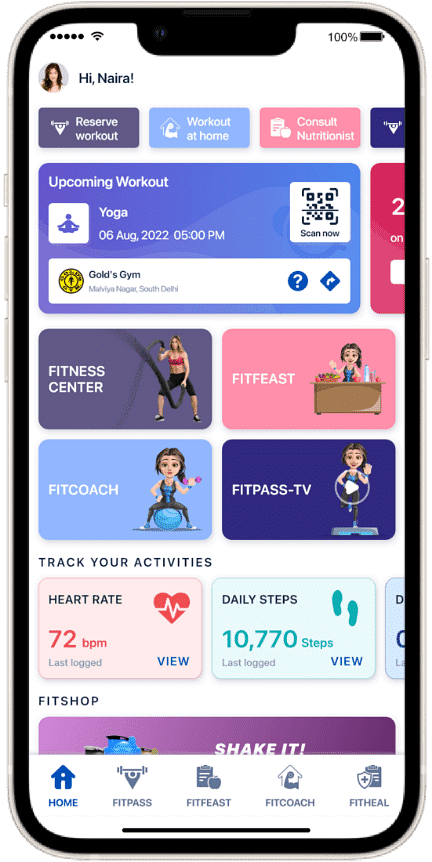Table of Contents
Did you know that 80% of fitness improvements can be achieved through bodyweight exercises alone? Research shows that bodyweight exercises and flexibility training can enhance your fitness without weights and gym equipment. The beauty of these workouts is that they are easy; they can be done by anyone, anytime and anywhere! In this article, you will learn how to get stronger and more flexible without weights and exercises that will help you become fitter.
Now, let’s take a closer look at the advantages of strength and flexibility workouts without weights and how to include them in your training.
Understanding Strength and Flexibility

Strength is not only about building muscles. It includes the strength of your muscles, bones, and even the core, which helps you hold and move your body effectively. Strength training improves posture, boosts metabolism, and improves activities of daily living.
Flexibility refers to the range of motion your muscles and joints can achieve. It is very important in preventing injuries, enhancing movement and flexibility of the body. Incorporation of both strength and flexibility exercises is very important in the development of a balanced fitness regimen.
The relation between strength and flexibility is important. Flexibility exercises such as stretching help muscles to recover faster while on the other hand, well-developed muscles can support and stabilise joints, enhancing overall flexibility. Combined, these two elements enhance the general fitness, flexibility and decrease the likelihood of getting an injury.
Bodyweight Exercises for Strength

Contrary to what most people believe, you do not necessarily need weights to build muscle. Bodyweight exercises for strength help you build your muscles without the need for equipment, as your body weight acts as resistance. Here are a few key exercises that are proven to be highly effective:
- Push-ups: A traditional exercise that is great for developing the upper body muscles, particularly the chest, shoulders and triceps.
- Squats: It is very effective in toning the lower body muscles, especially the quadriceps, hamstrings and glutes.
- Lunges: Ideal for enhancing balance, coordination, and the leg muscles.
- Planks: A great workout to build the core muscles without weights and to have a better posture.
The good news is that all of these exercises can be performed anytime, anywhere! There are always basic variations that you can try, and then, as you progress, you can try the more advanced variations. For example, begin with regular squats and then advance to the next level of performing jump squat exercises. This approach is ideal for those who would like to learn how to build muscle at home without equipment.
Flexibility Training Without Equipment

Flexibility is just as important as strength and should be worked on just as much. The flexibility exercises without equipment are easy to perform and yield good results. Here are some techniques that can help you stretch and strengthen your muscles:
- Static Stretching: Hold the stretch for about 20-30 seconds to allow muscles to lengthen and increase flexibility. It is effective in helping to cool down after a workout, relax muscles and avoid soreness.
- Dynamic Stretching: These include leg swings and arm circles, which are very useful for warming up before engaging in any form of exercise, increasing flexibility, and improving the flexibility of your joints.
- Yoga for strength and flexibility: Yoga is gentle yet effective method of building up the muscles and at the same time the flexibility. Some of the yoga poses include Downward Dog which stretches several muscles and joints and Warrior II which strengthens muscles and improves balance.
Incorporating stretching and flexibility stretches without weights into your routine helps prevent injuries and improves your overall fitness.
Incorporating Strength and Flexibility into Your Routine
Therefore, it is important to develop a good workout regimen that incorporates strength as well as flexibility exercises. Here's how you can design a plan that works:
- Plan your workouts: It is recommended to incorporate no-equipment workouts at least 3-4 times a week. Some days should be set aside for strength training (for instance, bodyweight exercises), while other days should be set aside for flexibility (yoga or stretching).
- Exercise Duration: Ideally, each session should take about half an hour to 45 minutes. The first exercise is a warm-up, the second is strength training using only one's body weight, and the last is a cool-down that emphasises flexibility.
- Consistency: This is because when you stick to a routine, you are able to witness long-term results. It is important to be consistent in order to get the desired outcomes.
Additional Tips for Success

To maximise the benefits of your workouts, here are some additional tips:
- Focus on form: It is important to perform the exercises correctly to avoid injuries and get the best results from your exercise routines. Regardless of whether you are performing isometric exercises for strength or bodyweight exercises, proper positioning of the body will help you to get the right muscle contractions.
- Fuel your body: Protein, fats, and carbohydrates are the macronutrients that will help in muscle recovery and growth through a well-balanced diet. Don't forget to hydrate! Muscles and joints require fluids in order to remain supple and healthy.
- Listen to your body: Pay attention to how you feel during and after workouts. Avoid overtraining, and always ensure that you give the body time to rest and recuperate.
Conclusion
If you start doing bodyweight exercises for strength and flexibility training at home, you will be able to build muscle without weights, enhance flexibility and balance, and feel stronger.
Are you ready to move to the next level? Begin incorporating these tips into your workout routine, and you will see the difference in strength and flexibility in the long run. It is an efficient, enjoyable and convenient method of keeping fit without the use of any complicated equipments.
Why not challenge yourself to a 30-day self-challenge? Start incorporating these tips into your routine and track your progress. For personalised guidance and structured workout plans, check out FITCOACH, where you can access workouts tailored to your fitness goals. Achieve your strength and flexibility targets, all from the comfort of your home!

Can I really build muscle without using weights?
Yes! Bodyweight exercises like push-ups, squats, and lunges can effectively help you gain strength without weights by using your own body as resistance.
How can I improve flexibility without equipment?
You can improve flexibility through exercises like static stretching, dynamic stretching, and yoga, which don’t require any equipment.
What are the best bodyweight exercises for beginners?
Some of the best bodyweight exercises for strength include squats, push-ups, lunges, and planks. Start with simple variations and progress over time.
How often should I do bodyweight exercises?
Aim to include strength training using body weight at least 3-4 times a week for optimal results, alongside flexibility training like stretching or yoga.
Can I combine strength and flexibility training in one workout?
Yes! Many workouts, like yoga or calisthenics, combine both strength and flexibility workouts, giving you a balanced fitness routine.


